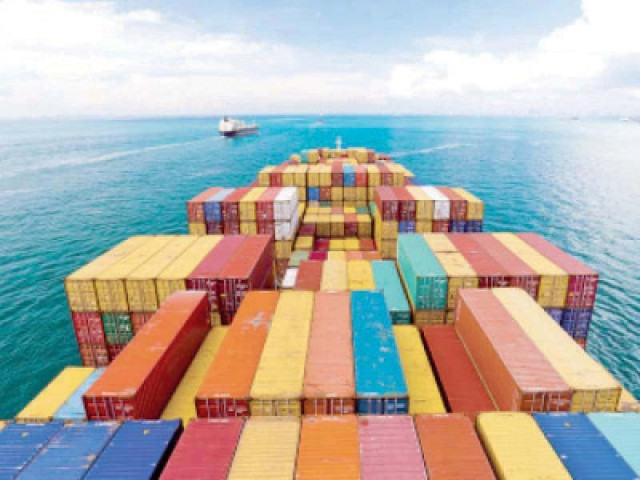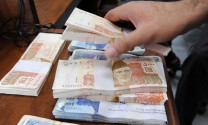Breaking the boom-bust cycle
Pakistan needs to remove export barriers to break vicious cycle

The State Bank of Pakistan (SBP), in its recent annual report, has slashed Pakistan’s GDP growth forecast for the current fiscal year to below 3-4% (compared to 6% last year) owing to the devastating floods and contractionary policy measures.
The central bank’s forecast is yet another indication of the grim economic conditions our country is currently in.
An induced contraction of the economy is a familiar point of inflection in our growth story. Pakistan’s boom-and-bust cycle and the policy responses to address it evoke a sense of deja vu.
Import restrictions and high cash rates seem to have had success in slowing the economy and reducing the current account deficit, which has decreased to $3.1 billion in Jul-Nov FY23 from $7.2 billion in Jul-Nov FY22.
However, our policy response has continuously been restricted to controlling imports, as we turn a blind eye to the structural issues that bring us to this critical juncture every few years.
Given the emphasis that successive governments have put on controlling imports, you’d be forgiven for believing that Pakistan’s import expenditure is well beyond its means. The numbers, however, tell a different story.
In 2021, Pakistan ranked 42nd globally for its GDP and 49th for import volume. This implies that Pakistan’s import volume is consistent with the size of its economy.
Conversely, our export volume ranks only 68th in the world. Pakistan’s exports of goods and services as a percentage of GDP were just 10.2% in 2021, significantly behind Bangladesh’s 14.8% and India’s 20% and light years behind Thailand’s 57.7% and Vietnam’s 92.7%.
Pakistan’s perennial struggles with high trade deficits can be understood by examining its ‘trade intensity’ – a measure of the sum of exports and imports of an economy as a percentage of GDP.
A low trade intensity indicates that a larger proportion of an economy’s GDP comprises domestic consumption and private investment rather than trade with the rest of the world.
Pakistan’s trade intensity in 2021 was just 34%, dwarfed in comparison to the Philippines’s 64%, Thailand’s 123.9% and Vietnam’s 188.3%. Herein lies the root cause of Pakistan’s boom-and-bust cycle.
Pakistan is far more trade averse than other countries in the region, and domestic producers prefer to sell their goods and services in the local market rather than exporting them.
Inward-looking domestic industries still need imports to sustain their production, and the majority of Pakistan’s imports consist of goods that are utilised in the production process – intermediate goods account for 53%, fuels 24% and capital goods 11%.
Whenever there is an uptick in economic activity, domestic producers require more imports to meet consumer demand. As the goods produced from these inputs are not exported, the disparity between imports and exports widens, bringing the current account deficit to unsustainable levels. Pakistan has been unable to match the growth levels of China, India and Bangladesh because even a growth rate of 5-6% brings an economic crisis with it, evidenced by the 5.8% GDP growth rate in FY18 and 6% in FY22.
Since the majority of imports are used productively (though for domestic consumption), limiting imports only slows down economic activity in the short term.
The real question that should be the focus of economic policy is why our domestic producers don’t export their finished products overseas. The answer lies in our excessive use of trade protections (tariffs).
Pakistan’s average tariff rates are amongst the highest in the world. The World Bank has estimated that the average tariff rate in Pakistan has risen from 13% in FY15 to 20% in FY21.
These increased tariff rates have had a pronounced effect on exports, which have been stunted to a measly 6.9% growth compared to imports, which grew by 23% during this period.
The argument in favour of trade protectionism is that domestic producers will be unable to compete with foreign producers who are able to supply goods at a lower price. These measures seemingly benefit domestic producers, but excessive trade protection incentivises firms to target domestic markets rather than export markets.
Selling finished goods in protected domestic markets has become far more profitable than exporting goods in competitive international markets. This implicit advocacy for inward orientation is part of the reason why trade makes up such a low percentage of GDP.
Apart from discouraging exports, trade protectionism also fosters inefficiencies in domestic production and limits the competitiveness of exports. The decline in productivity also raises the overall cost of production in the sector, forcing exporting firms to sell their goods at higher prices, making them less competitive internationally.
The high levels of tariffs in Pakistan have triggered a never-ending cycle. Tariffs offer leeway for domestic producers to be inefficient and sell products at higher than international prices.
The increased inefficiency gradually erodes the price margin gained from tariffs and domestic producers need more protection to maintain their advantage over foreign producers. This symbiotic relationship between protectionism and inefficiency has plagued Pakistan’s industries and has prevented enterprises from increasing their exports.
Domestic producers will not be strengthened by more protection and this cycle can only be ended by gradually reducing the rate of tariffs across the board. By exposing our producers to foreign competition, they will be forced to become efficient and competitive.
Some progress has been made on this front in the first National Tariff Policy (2019-24), which recognised the need for tariffs to be gradually reduced to incentivise exports. There has been a slight decrease in tariff rates from FY20 to FY21, but this decline must be continued and accelerated to make a meaningful impact on exports.
The current imbalance between imports and exports is grossly unsustainable. While the policymakers’ impulse has always been to pursue the limitation of imports, this will only provide temporary relief.
Pakistan’s exports have long remained stagnant, and we must recognise the need to remove barriers that prevent exports from fulfilling their potential. Doing so will go a long way to break the vicious boom-and-bust cycle.
THE WRITER IS A FREELANCE COLUMNIST AND AN ECONOMIC ANALYST BASED IN AUSTRALIA



















COMMENTS
Comments are moderated and generally will be posted if they are on-topic and not abusive.
For more information, please see our Comments FAQ